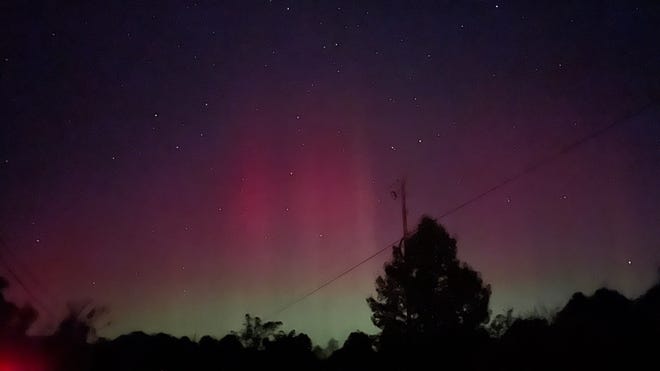
2024-10-11 21:50:06
Aurora borealis, better known as the northern lights, could be visible in New Jersey again tonight.
The current forecast from the NOAA Space Weather Prediction Center shows the phenomena being visible across the northern United States. Parts of the New York and Philadelphia metro areas are within the limits for a potential sighting of the northern lights.
On the night of Oct. 10, people all around the Garden State were surprised to see the lights dance across the sky.
The geomagnetic storm is currently at G4 intensity out of a G1-5 scale. G4 storms could lead to some voltage problems on power grids. Other effects include temporarily degraded satellite navigation and disrupted low frequency radio navigation.
Why is the aurora visible in the Northeast?
This geomagnetic storm is from a coronal mass ejection, which raced toward Earth on Oct. 10.
A coronal mass ejection is a large expulsion of plasma and magnetic field from the sun’s corona, according to the SWPC. The energy was moving at 2.5 million mph, according to Shawn Dahl, the service coordinator for SWPC, during a virtual media briefing on Oct. 9.
Simply put, the solar storm is strong enough to push the charged particles farther south than usual where they interact with gases in the atmosphere and result in streaks of colors dancing through the sky.
According to SWPC, a G4 storm results in an aurora that could be seen as far south as Alabama.
Will there be other effects from the storm?
Dahl said in the Oct. 9 briefing that SWPC has warned North American power grids, and he said they have begun to take precautions to mitigate any effects from the severe geomagnetic storm.
How can the northern lights be seen?
To see the aurora, you will need to go to a place with a view of the northern horizon and limited light pollution. It will be difficult to see it from the center of a city or town.
In New Jersey, the best bet is to go a high place in the darker and more remote areas of your region. Luckily, much of the area is going to experience clear skies tonight.
In the press briefing, SWPC Space scientist Rob Steenburgh said cellphone cameras could pick up the aurora better than the naked eye could.
“People can pick it up now with their cameras, given the types of sensors that most cellphone cameras have these days,” he said. “So there is a chance, even if you’re not seeing the naked eye, to still pick it up.”







